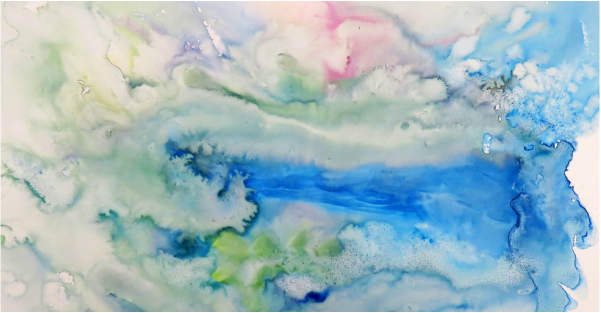"I am still learning" ~ Michelangelo’s motto.
It allows for a variety of colours to be used without making a dominant feature, and by substituting detail with variation in colour and/or tone you create interest in a subtle way.
It creates soft edges. Hard edges (wet-on-dry) draw the eye, remember, so having soft, wet-into-wet edges creates contrast. By using the wet-into-wet technique in the background, aerial perspective is created.
This technique also creates nebulous passages of colour that help set mood and atmosphere.
One cannot predict what will happen, it's a matter of reacting to, and using to your advantage, what happens on the paper. It is the joy of watercolour! For all of these reasons, to me, it is the essence of watercolour painting. The wet-into-wet technique involves "watching paint dry", but in this case it can be far from boring, but you have to be fearless and brave with it!
I think it is the hardest of the watercolour techniques to master so I made the following notes which, although complicated, I hope will help...
Also available by subscription for £120 for 1 year (with a full refund within 14 days if you decide it's not for you) is my online subscription site where you will find step-by-step tutorials that link to over 30 detailed articles on every aspect of painting as well as challenges, ideas and inspiration.
The content is linked to my ebook' "The watercolour book : how to paint anything", which is aimed at teaching all levels of ability.
If you have something you would like to paint but don't know where to start or just need some help you can book a one-to-one virtual lesson via any means available to you for £12.50.
Membership is paid for by block booking so by not re-registering at the end of the term you will effectively be unsubscribing.
If you have any questions, please contact me. For more information about this please click here.
There is nothing to lose as I am giving everyone a 14-day money-back guarantee if not satisfied.

 RSS Feed
RSS Feed